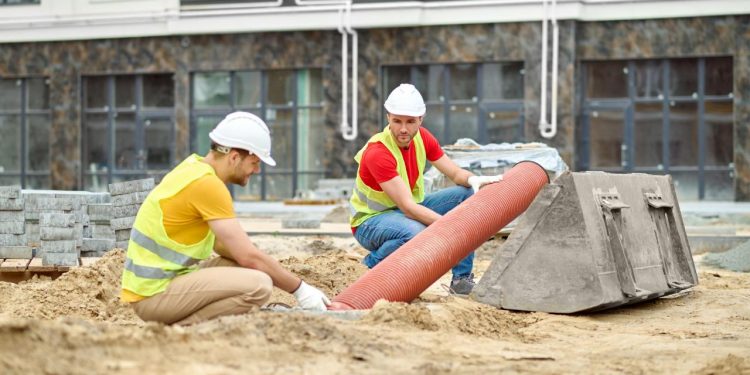Drainage s&a groundworks and plant
Effective drainage is a fundamental aspect of any successful construction project. Poor drainage can lead to a multitude of problems, including structural damage, increased maintenance costs, and even potential health issues. Therefore, a robust drainage system is vital in any construction project, regardless of its size or complexity.
The Importance of Drainage in Construction
In construction, drainage systems are designed to control the flow of water, both surface and subsurface, away from the building. Good drainage ensures the structure remains dry and prevents problems such as water infiltration, dampness, and soil erosion.
Water can be the bane of construction projects, primarily when it’s not managed effectively. It can weaken the foundation, cause cracks in walls, lead to mold growth, and even result in the deterioration of the entire structure over time.
Drainage Solutions in Construction
Construction drainage solutions are varied, including gutters, downspouts, French drains, and grading. The choice of the appropriate solution depends on the site conditions and the type of construction.
Gutters and downspouts collect water from roofs and direct it away from the building’s foundation. French drains, on the other hand, are underground systems designed to redirect subsurface water from the building.
Grading refers to the process of sloping the land away from the building to ensure that water naturally flows away from the structure. This is often the first step in creating an effective drainage system.
The Role of Professionals
Proper drainage design is a complex task that often requires the expertise of professionals. Engineers must consider numerous factors, including the area’s climate, the building’s design, the soil’s composition, and local building codes. All these considerations help to ensure the creation of a system that effectively manages water runoff and maintains the integrity of the structure.
Sustainable Drainage Systems (SuDS)
Modern construction is increasingly focused on sustainability, and drainage systems are no exception. Sustainable Drainage Systems (SuDS) are an innovative approach designed to manage runoff water close to where it falls and mimic natural water runoff processes.
SuDS not only manage water runoff but also improve water quality, promote groundwater recharge, enhance biodiversity, and provide amenity benefits. By managing runoff water close to its source, SuDS can significantly reduce the impact on existing sewerage systems and the environment.
Conclusion
In conclusion, efficient drainage is an indispensable element of construction. It safeguards the structural integrity of buildings, reduces maintenance costs, and ensures a healthier living and working environment. Whether you’re building a skyscraper or a single-family home, remember that a well-designed drainage system is as vital as the foundation it protects.






